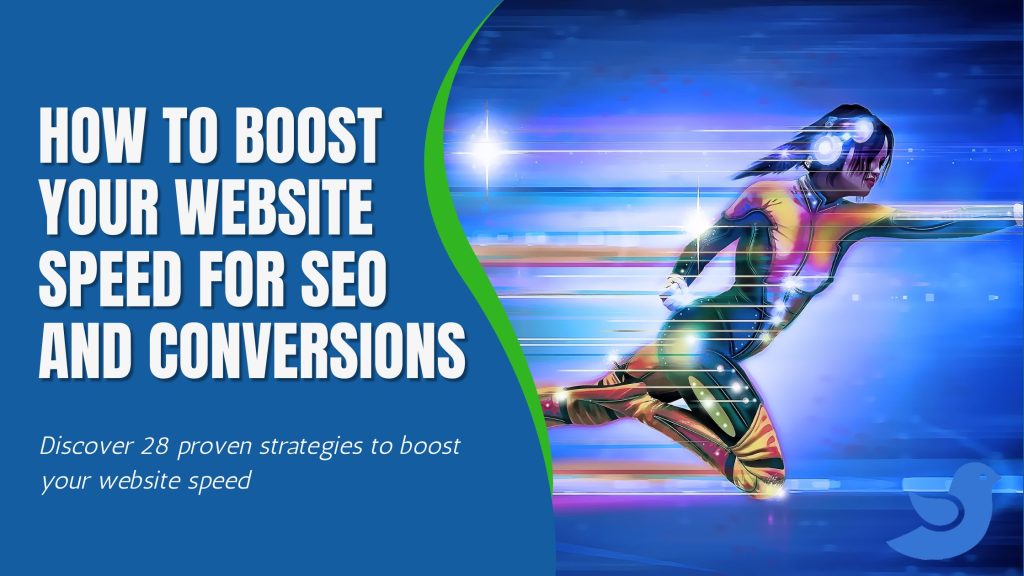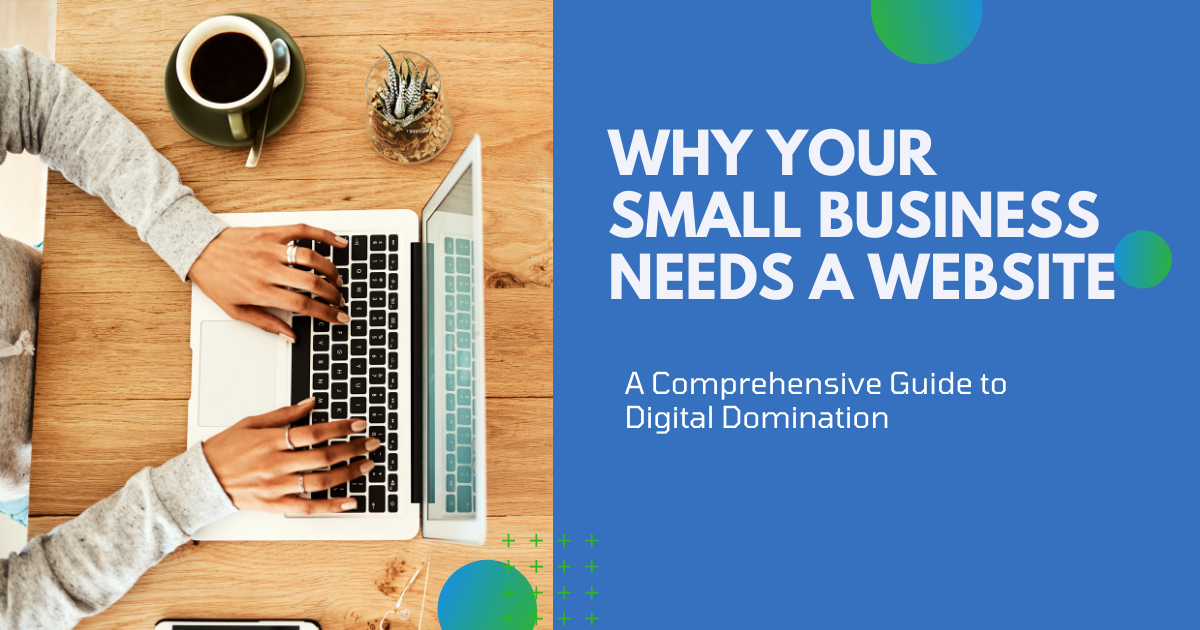In the digital jungle, website speed is your apex predator – a sleek, agile cheetah that pounces on leads and devours conversions. Unfortunately, many websites lumber along like sluggish sloths, leaving visitors staring at loading bars and wandering off to greener, faster pastures. Boosting your website speed isn’t just a technical nicety; it’s a crucial survival tactic for success in the digital marketplace.
- Understand the Impact of Website Speed
- Why Website Speed Matters
- Unleashing the Cheetah: Optimizing for Speed:
- Audit Your Current Website Speed
- Image Optimization
- Leverage Browser Caching
- Enable Compression
- Minimize HTTP Requests
- Implement a CDN
- Optimize Your Coding
- Defer JavaScript Loading
- Reduce Server Response Time
- Use Asynchronous Loading for CSS and JavaScript
- Avoid Redirects
- Monitor Mobile Performance
- Implement HTTP/2
- Regularly Update CMS and Plugins
- Choose the Right Theme
- Manage Ads Efficiently
- Regularly Clean Up Your Database
- Avoid Using Too Many Fonts
- Optimize CSS Delivery
- Set Up a Failover or Redundancy System
- Implement Progressive Web App (PWA) Techniques
- Refine User Experience (UX) Load Times
- Utilize Prefetching Techniques
- Conduct A/B Testing for Performance
- Develop a Performance Budget
- Adopt Latest Web Technologies
- Prioritize Above-the-Fold Content
- Educate Your Team
- Measuring Your Success:
- Conclusion
Learning how to boost your website speed can yield remarkable improvements in your SEO rankings and conversion rates. A swift-loading site significantly enhances user experience, directly influencing visitor engagement and retention.
In this comprehensive guide, we’ll walk you through actionable steps to turbocharge your webpage and scale the search engine ladder, while also lifting your conversion opportunities.
Understand the Impact of Website Speed
Before diving into optimization techniques, let’s establish why website speed matters. Search engines like Google prioritize user experience; a fast-loading website is seen as user-friendly, thus better for SEO. Moreover, speed impacts conversions. Studies highlight that even a one-second delay can cause a 7% reduction in conversions.
Why Website Speed Matters
Think of your website as a first date. Would you wait around for someone who takes hours to show up, riddled with awkward silences and lagging conversation? Probably not. Google and your visitors feel the same way. Here’s why boosting your website speed is essential:
- SEO Domination: Google loves speedy websites. Faster loading times improve your website’s ranking in search results, putting you closer to hungry eyeballs searching for your offerings.
- Conversion Champion: Nobody likes waiting. Slow websites lead to higher bounce rates and abandoned carts, leaving those conversions dangling just out of reach.
- User Experience Bliss: A fast website is a smooth, seamless experience. Visitors engage more, remember you better, and come back for more.
This guide will equip you with the tools and techniques to transform your website from sloth to cheetah, boosting your website speed for both SEO and conversions.
Unleashing the Cheetah: Optimizing for Speed:
Now, let’s get your website sprinting like a champion. Here are some key strategies for boosting your website speed:
Audit Your Current Website Speed
The first step to boost your website speed is to know your baseline. Use tools like Google PageSpeed Insights, GTmetrix, or Pingdom. These tools will provide insights into what’s slowing down your site. From large image files to unoptimized code, understanding these bottlenecks is vital for improvement.
Image Optimization
Large, unoptimized images are one of the primary culprits in slow website loading times. Optimize your pictures by compressing them without sacrificing quality. Tools like Adobe Photoshop, TinyPNG, or online services such as Kraken.io can significantly reduce file sizes.
Tame the JPEG Jungle without Shrinking Your Appeal
Images are the vibrant tapestry of your website, but they can also become hefty anchors dragging down your loading times. Optimizing your visuals is like mastering the art of camouflage – hiding the weight without compromising on beauty. Here’s how to conquer the JPEG jungle and unleash your website’s cheetah-like speed:
- Compression Champions: Tools like TinyPNG and JPEGmini are your trusty companions on this expedition. They expertly squeeze out unnecessary data from your images. Often reducing file sizes by a staggering 50% without sacrificing pixel-perfect clarity. Imagine lighter suitcases for your visuals, allowing them to travel across the internet with lightning speed
- Next-Gen Formats: Embrace the WebP Wave: WebP is the futuristic superhero of image formats. It compresses images even further than JPEGs, often by 30%, while maintaining superior quality. Think of it as a teleportation device for your visuals, beaming them to visitors’ screens in a blink. Consider using plugins or server-side solutions to convert your images to WebP, especially for high-traffic websites.
- Size Matters: Choose Wisely: Don’t force a full-HD portrait into a thumbnail box. Resize your images to match their intended display dimensions. This reduces their weight without making them pixelated monsters. Imagine tailoring your visuals to perfectly fit their digital frames, minimizing unnecessary baggage.
- Lazy Loading: A Strategic Retreat: Not every image needs to greet your visitor the moment they land. Employ lazy loading techniques that only render visuals as they scroll into view. This delays the loading of non-critical images. Giving your website that initial speed boost, like a runner taking a strategic breather before the final sprint.
- Lossless vs. Lossy: Finding the Balance: For photos and illustrations, prioritize lossless compression, which preserves every pixel. But for decorative elements and icons, consider lossy compression which discards some data, sacrificing minor details for significant size reduction. Think of it as trading a few freckles for a lighter backpack. Perfect for website elements that prioritize speed over absolute precision.
Remember, image optimization is a multi-pronged approach.
Combine these techniques to become a master of visual streamlining, ensuring your website is both beautiful and blazing fast. By taming the JPEG jungle and embracing next-gen formats. You’ll transform your images from speed-sapping culprits to sleek, agile assets that propel your website towards cheetah-like performance.
Leverage Browser Caching
When you leverage browser caching, you tell visitors’ browsers to store certain elements of your website locally. It means they don’t have to reload the entire page every time they visit your site, considerably improving load times.
Enable Compression
Use Gzip compression to reduce the size of your CSS, HTML, and JavaScript files. It’s like putting your website elements into a zip file. When someone visits your site, this ‘zip file’ is transmitted and then unpacked, leading to faster download and browsing times.
Minimize HTTP Requests
Every piece of your website requires an HTTP request. More elements mean more requests and a slower site. Minimize these by simplifying design elements, using CSS instead of images where possible, and combining multiple stylesheets into one.
Implement a CDN
A Content Delivery Network (CDN) stores copies of your website on multiple servers around the world. When someone accesses your site, they’re directed to the nearest server. This reduces load time, as the data has less physical distance to travel.
Implementing a Content Delivery Network (CDN) like Cloudflare can significantly enhance your website’s speed and performance. CDNs work by caching static resources like HTML pages, JavaScript files, stylesheets, images, and videos on a network of distributed servers. When a user visits your website, Cloudflare serves these resources from the server that is geographically closest to them.
By using Cloudflare, the CDN dramatically reduces the latency by minimizing the distance the data has to travel from the server to the user, which in turn reduces load times and improves the user experience. It’s especially effective for sites with a global audience, ensuring that a visitor from Moscow gets as rapid a response as one from California.
Optimize Your Coding
Clean coding is key to a fast website. Every piece of unnecessary code adds to the size of your page, which can slow things down. Simplify your code by removing commas, spaces, and other unnecessary characters. Also, consider the use of AMP (Accelerated Mobile Pages) for mobile devices to deliver content instantly.
Defer JavaScript Loading
Deferring the loading of JavaScript ensures that the rest of your content can load without a delay. If JavaScript loads asynchronously, users will see your content sooner because the browser won’t be busy compiling and executing JS.
Reduce Server Response Time
Your DNS (Domain Name System) lookup time can also impact speed. A DNS service that has a quick response time is essential. If your server’s response time is slow, it might be time to look at your web server software or the performance of your hosting service.
Use Asynchronous Loading for CSS and JavaScript
Asynchronous loading can also be applied to CSS and JavaScript. This means some files can be loaded at the same time rather than one at a time. It helps reduce the page load time significantly.
Avoid Redirects
Redirects create additional HTTP requests and increase load time. Minimize them as much as possible to boost your website speed. Check your site for broken links and fix them to avoid unnecessary redirects that can hamper loading times.
Monitor Mobile Performance
With the increasing prevalence of mobile browsing, your site’s mobile performance is just as important as its desktop counterpart. Google’s shift to mobile-first indexing underlines this fact. Optimize for mobile by utilizing responsive design and testing page load times regularly on various devices.
Implement HTTP/2
HTTP/2 is a major revision of the HTTP network protocol and has features designed to increase page load speed. It includes server push and request multiplexing. If your hosting company supports HTTP/2, make sure it’s enabled for your site.
Regularly Update CMS and Plugins
One of the simplest but often overlooked steps is to regularly update your Content Management System (CMS) and any plugins or extensions you use. Developers continuously optimize their software, and updates can contain performance improvements that can boost your website speed.
Choose the Right Theme
Themes can either speed up or slow down your website. Opt for themes that are known for their efficiency and speed. A feature-rich theme might look tempting, but all those features can bloat your site and slow it down if not properly optimized.
Manage Ads Efficiently
Too many ads or unoptimized ad media can drag down your load times. Balance monetization with performance by using ads that are resource-effective. Employ ad networks that allow asynchronous ad loading so your content doesn’t have to wait for ads to load.
Regularly Clean Up Your Database
Over time, your website’s database can accumulate overhead that slows down your performance. Regular cleaning of your database by getting rid of old drafts, spam comments, and irrelevant metadata can help boost your website speed.
Avoid Using Too Many Fonts
Using a variety of fonts might seem like an attractive design choice, but each font and weight adds to the amount of time it takes to load your page. Minimize the number of font styles and weights to only those that are absolutely necessary.
Optimize CSS Delivery
For rendering-blocking resources, like CSS, it’s important to in-line the critical CSS required for above-the-fold content and defer non-critical CSS. This ensures the visual parts of your site are loaded as quickly as possible.
Set Up a Failover or Redundancy System
Even the best-optimized websites can experience downtime if the server crashes. To boost your website speed and availability, consider a failover system where another server can take over if your primary server fails.
Implement Progressive Web App (PWA) Techniques
Progressive Web Apps provide a mobile-app-like experience via the web. They are designed to be fast and engage users from the very first visit with features such as service workers, which cache the essential resources to reduce the loading time significantly, especially for repeat visits.
Refine User Experience (UX) Load Times
The perception of speed can sometimes be just as important as actual speed. Employ skeleton screens (also known as UI placeholders) to create the feeling of a faster load time. By immediately displaying the layout of a page without the content, users perceive that the page is loading quicker than it actually is.
Utilize Prefetching Techniques
Prefetching is a technique where you can load resources before they are needed. For instance, if you can predict the next page a user will visit, you can preload some of its resources in the background.
Conduct A/B Testing for Performance
Not every optimization technique has the same impact on each website. Perform A/B testing to see what makes your particular site faster. Monitoring and analyzing the results can help fine-tune your optimizations for better outcomes.
Develop a Performance Budget
A performance budget is a set of limits that you impose on the website concerning the size of pages, CSS, JavaScript, etc., to ensure that no page exceeds these limits. As you add new features and content, this budget will keep you accountable for maintaining speed standards.
Adopt Latest Web Technologies
Stay updated with the latest web technologies. For example, using the latest versions of PHP, HTML, CSS, and JavaScript brings performance improvements as these languages evolve to become more efficient and compact.
Prioritize Above-the-Fold Content
By prioritizing above-the-fold content (the portion of the website visible without scrolling), you improve the perceived performance of your site. Techniques such as lazy loading, which defers the loading of non-critical resources at page load time, can help in this regard.
Educate Your Team
Ensure that everyone involved in your site’s operation understands the importance of website speed. From developers to content creators, team members should be knowledgeable about their impact on site performance and how to mitigate it.
By taking these steps to boost your website speed, you’re not just enhancing website visitors’ experience; you’re also improving your SEO standings. As algorithms evolve, search engines place an even greater emphasis on user experience.
A fast, responsive site is essential for conversions and climbing those rankings. Keep these strategies in mind, apply them diligently, and you’ll see a marked difference in your website performance, SEO, and conversion metrics. Remember, in the digital realm, speed is not a luxury; it’s a necessity for success.
Measuring Your Success:
Tracking your progress is vital for maintaining a cheetah-like website. Use tools like Google PageSpeed Insights, Pingdom, and GTmetrix to measure your website’s loading times and identify areas for improvement. Monitor your SEO rankings and conversion rates to see the positive impact of boosting your website speed.
Remember, a fast website is a happy website, and happy websites attract hungry conversions and SEO glory. So, take these tips as your hunting tools and unleash the inner cheetah on your website! Speed demon status awaits!
Conclusion
In conclusion, there are many strategies you can employ to boost your website speed, which in turn can aid your SEO and conversion rates. From optimizing images to leveraging advanced web technologies, each technique contributes to a slicker, quicker user experience and a more powerful online presence.
Remember, it is not a one-time job but a continuous process of improvement. Keep iterating, keep measuring, and keep your website on the fast track to success.
Bonus Tip: Stay informed! Web technology evolves rapidly. Follow industry blogs, attend webinars, and keep an eye on Google’s ever-changing algorithms to ensure your website speed optimization remains top-notch.
Now go forth and conquer the digital jungle with the sleekness and power of a website that knows how to fly!
Related:







One Response